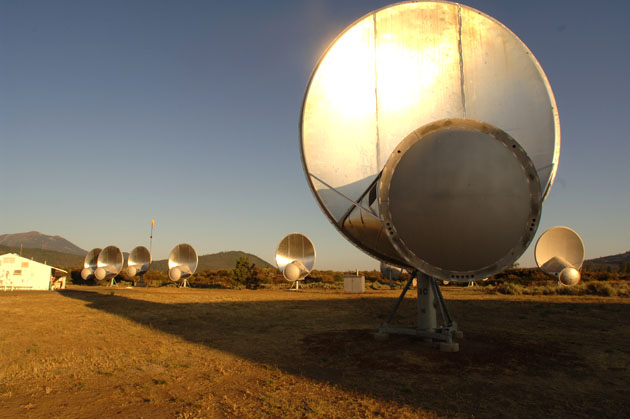SETI search resumes at Allen Telescope Array, targeting new planets
December 7, 2011
The Allen Telescope Array (ATA) of the SETI Institute is once again searching planetary systems for signals that would be evidence of extraterrestrial intelligence, such as Kepler-22b, which the Kepler mission confirmed Monday as its first planet in the “habitable zone.”
“This is a superb opportunity for SETI observations,” said Jill Tarter, the Director of the Center for SETI Research at the SETI Institute. “For the first time, we can point our telescopes at stars, and know that those stars actually host planetary systems — including at least one that begins to approximate an Earth analog in the habitable zone around its host star. That’s the type of world that might be home to a civilization capable of building radio transmitters.”
The ATA had been placed in hibernation mode last April as the result of the withdrawal of the SETI Institute’s former partner, U.C. Berkeley, due to budgetary shortfalls. With new funding recently acquired for observatory operations, the ATA can resume SETI observations where it left off: examining the thousands of new candidate planets found by Kepler.
Highest priority will be given to the handful of worlds discovered so far that are located in their star’s habitable zone: the range of orbital radii where temperatures are neither too hot nor too cold for liquid water to exist. Most astrobiologists consider that liquid water is the sine qua non for life.
Observations over the next two years will allow a systematic exploration of these Kepler discoveries across the entire, naturally quiet 1 to 10 GHz terrestrial microwave window. The ATA is unique in providing ready access to tens of millions of channels at any one time, anywhere in this 9 billion channel range. Until recently many SETI searches focused on limited frequency ranges.
The restart of SETI work at the ATA was made possible thanks to public support of SETI research via the www.SETIStars.org web site and to the United States Air Force, as part of a formal assessment of the instrument’s utility for Space Situational Awareness (see www.seti.org/afspc).
The public can follow the new ATA observations via the SETIStars.org web site and can read more about the overall work of the SETI Institute at www.seti.org. http://goo.gl/ykFTf.
